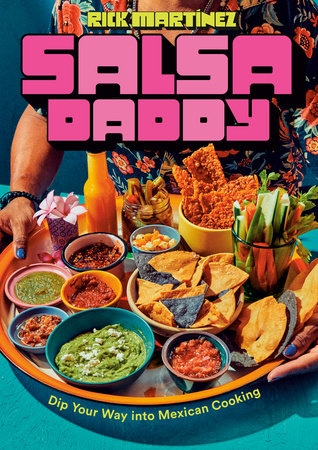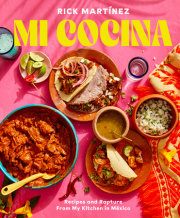IntroductionI’d never had a salsa like this before. It was made up of caramelized onions and chiles serranos, and not much else. But the flavor—where to begin? It hit me like a luchador’s full body slam. It combined the sweet depth of the most sublime French onion soup you’ve ever had—maybe in a dingy bistro on a wobbly table with a red checkered tablecloth—with the smoky and spicy heat of serranos, bringing me solidly back to Mexico. It was lightly blended and pourable, but it was still rich, thick, and warm. I slathered it on my torta and realized: Nothing will be the same after this.
It changed the way I think about salsa. I was in Mexico City at my friend Carlos Ruiz’s Taqueria Trompo Imperial. When he served me a football-size torta, he brought out a dozen mismatched clay bowls of salsas to sample. I landed on that caramelized onion salsa and, I’m not kidding, I went home that night and lay in bed, still thinking about it. I could see myself as if from a satellite thousands of miles above Mazatlán, a tiny speck on this planet, where there are infinite possibilities for salsa.
Cooks tend to get set in their ways. If you grew up making your grandmother’s pozole rojo with ancho, guajillo, and cascabel chiles, that’s how you’re going to make it forever. Carrying on tradition is beautiful, if a little intense. And yet when it comes to salsas, I noticed that a lot of Mexicans chill out. They’re freer. They experiment and invent. They’re in a mindset of uninhibited creativity. After all, the role of any salsa is to complement and catapult the joy of eating. So shouldn’t it be a joy to make? When it’s time to make salsa, it’s time to play. So, let’s play.
In my first book,
Mi Cocina, I explored the diversity of Mexican food across the country. And over and over, readers kept telling me how much they loved the salsa chapter and wished there were even more. I agree! Salsa—not just a dip for chips—is a great gateway into Mexican cooking because it’s the base for so many iconic dishes . . . and it goes with so many more.
In
Salsa Daddy, you’ll get to know many different types of salsas, and by extension, different types of chiles, how to tame their heat, how to deepen the flavors of other ingredients, and you’ll end up with a fridge and freezer full of salsas to save you from boring weeknight dinner hell for months and months.
I didn’t expect writing this book would fundamentally change me as a cook, but it did. Before, I made salsas to accompany main dishes. It was the second thing, the accessory. But here, I learned to think salsa-first. My imagination went wild. I was pulling ingredients from every corner of the market, flavor combinations popped into my head like hallucinations. I wasn’t experimenting as a scientist in a lab, I was playing like a kid. Once the salsa was made, then I’d figure out how to pair it, testing it with all of the daily dishes in my life: breakfast tacos, rotisserie chicken, grilled shrimp, roasted vegetables. Each salsa’s versatility felt expansive. What
couldn’t a smoky and creamy chipotle salsa go on? I ate it on everything in sight. And I learned that whether I’m making a traditional Mexican dish, an American one, or even just a basic sandwich or bowl of pasta, that collection of salsas always had a place at the table—and always made things better.
I was cooking with salsa in a new way, too, spooning that caramelized onion salsa into a simple chicken soup (see page 272). I combined the leftovers of two salsas into a pan of fried rice—great. I roasted a chicken smothered in leftover apricot-chipotle salsa (see page 129)—fantastic. I coated a filet of fish in a spicy aioli and broiled it—insane (see page 213). Almost 100 different salsas came and went from my kitchen and I never got bored. When you’re feeling overwhelmed by the task of what to make for dinner, it all falls into place if you do one thing: Just make salsa!
Copyright © 2025 by Rick Martínez. All rights reserved. No part of this excerpt may be reproduced or reprinted without permission in writing from the publisher.





















